Vacuum tubes, historically speaking and consistent with what are used in today’s audio systems, were invented, according to most sources, in 1904 by John Ambrose Flemming. In 1907, New York inventor Lee de Forest patented a tube design similar to Flemming’s, except for an added electrode called a grid. Initially, tubes were used in the then state of the art communications technology, the telegraph.
Flemming’s invention was called, not surprisingly, a Flemming Valve and, as he was an English physicist, the “valve” moniker became standard in England and throughout Europe. Here in the United States, the term “tube” is most commonly applied. Understand first the terms “valve” and “tube” both describe the same thing – a device utilizing thermionic release of electrons to facilitate both amplification and converting alternating current (AC) to direct current (DC). Even the identifier, or part number, may be listed one way in the U.S. and a different way in Europe – for the same tube, no less.
Tubes reigned supreme in audio systems for almost the next 50 years. In December of 1947, everything changed when two scientists with Bell Laboratories, then a subsidiary of AT&T, shocked the world with the invention of the semiconductor transistor. Almost immediately, any electronic device, including radios, televisions, and even home stereo equipment, began the transition from requiring bulky, heat producing tubes to transistors and the integrated circuit. Suddenly, the audio system battle between tubes and solid state, along with the unanswerable question of which one is best, began.
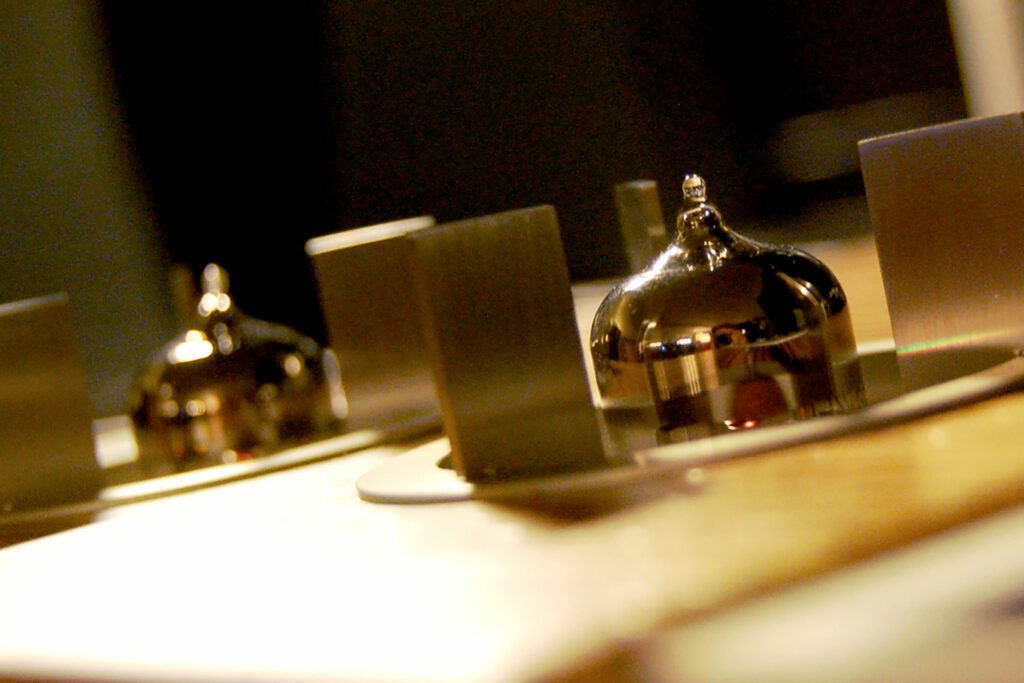
What Does a Vacuum Tube Do and What Are Its Parts?
In essence, a vacuum tube is an electrical device designed to, as it applies to high performance audio, amplify a signal – predominately in a power amp, but also in other components as well, invert the signal polarity where required and convert alternating current (AC) to direct current (DC). What a tube effectively does is control the current flow of electrons inside the tube itself.
Without being overly technical and too lengthy, most tubes have very similar internal parts. Common to all amplification tubes is a filament. Filaments produce both heat and light. The glow you see on a high performance amplifier tube is created by the filament. This is also why tubes get so blazing hot. A tube with a filament with different colored lights is not really doing anything special. The light show does look really fascinating, however. Filaments are designed to create sufficient heat to assist with the production of electrons. The filament’s real purpose is to work in conjunction with the cathode.
In tube components, the cathode is a vital part of how a tube works. When the filament gets hot, the negatively charged cathode, almost always in very close proximity to the filament, will be heated by the filament to a very high temperature. When a sufficient temperature has been achieved, the cathode begins to emit electrons. Because inside the tube itself is a vacuum, the electrons are free to move unimpeded, and will bang around with no destination. Something is needed to attract the electrons and force them to move in a manner intended to complete an electrical circuit.
The anode carries a positive charge. Just as in magnets, positively and negatively charged poles attract each other. This is what takes place when the negatively-charged cathode, heated by the filament, releases electrons and the positively-charged anode attracts these electrons. This flow from negative to positive actually functions like an electrical circuit, but only in one direction. Variable current flow is why the term “valve” was originally used. The flow of electrons creates an electrical circuit as long as there are electrons moving from the negative, or the cathode, to the positive, or the anode. This explains why high voltages are required in tube amplification. A lot of voltage is required for the filament to create sufficient heat to cause the cathode to emit electrons, which pass to the anode. This flow of electrons takes place because, just as in magnets, two forces with opposite polarity will attract each other. Likewise, similar poles will be repelled.
Located in between the cathode and the anode is a charged piece of metal most commonly called a grid. The amp (or other type of component) is linked to the grid. The polarity of the grid changes from negative to positive. When the grid is negatively charged, the flow of electrons is reduced. When the grid carries a positive charge, the signal is accelerated, because opposite poles attract. Because the component is tied to the grid, the signal is increased and decreased, thereby affecting the operation of the component itself.
In this respect, the tube is acting like a “valve,” increasing and decreasing the signal as the flow of electrons are varied. A continuous flow of electrons moving from the negative cathode to the positive anode ensures the signal is maintained. Describing a tube as a “valve” makes much more sense when it is understood how a tube actually controls the flow of electrons, just as a water spigot controls the flow of water.
While not always used in tubed components, one element may be a rectifier, or more technically, a diode. Almost always used in conjunction with a transformer, a diode has the primary task of converting AC power from the wall outlet to DC, which is what power supplies and other related electrical circuits prefer. Sometimes, other internal electronic parts facilitate AC/DC conversion, which means that a diode, or rectifier tube, will not be used. This is a matter of design of the individual piece of audio gear.
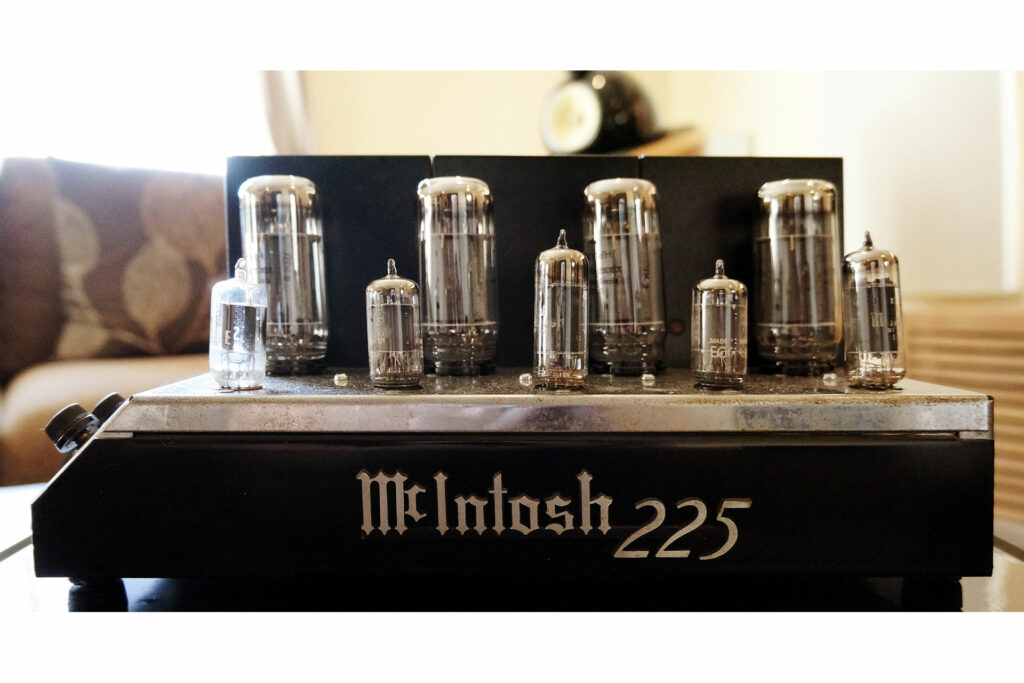
What Are Some Types of Tube Audiophile Gear and How Are They Different?
One of the more common type of products using tubes is the Single End Triode Amp, or SET for short. SET amps are basically simple in their design and application. In a SET tube amp, one triode tube is used for each channel. Because of their design, SET amps are normally lower powered, commonly two to 20 watts per channel. They will work best with highly efficient speakers that do not need massive amounts of power. If you like a very warm, highly detailed presentation at lower volumes, a single ended triode, or SET amplifier, is a very wise choice. Any speaker system with low efficiency may not perform very well with a low powered SET type amp. Conversely, a highly efficient speaker paired with an SET amp may have the ability to play very loudly. I’ve heard three watt SET amps paired with efficient speakers play so loudly I almost had to leave the room.
Any tube amp which provides substantial amplification, well beyond the range of a triode tube, comes in two versions: tetrode and pentode. While these types of tubes function in a similar manner to the more simplistic triode tube, tetrode and pentode tubes have a slightly different design to provide increased amounts of amplification. These type of amplification circuits are easily capable of 100 watts to 200 watts (sometimes even more) of output power per channel. Different brands of tubes may sound different and even cause increased levels of distortion. Some amps may even contain both tetrode and pentode tubes in the same device, and allow the user to switch between each one.
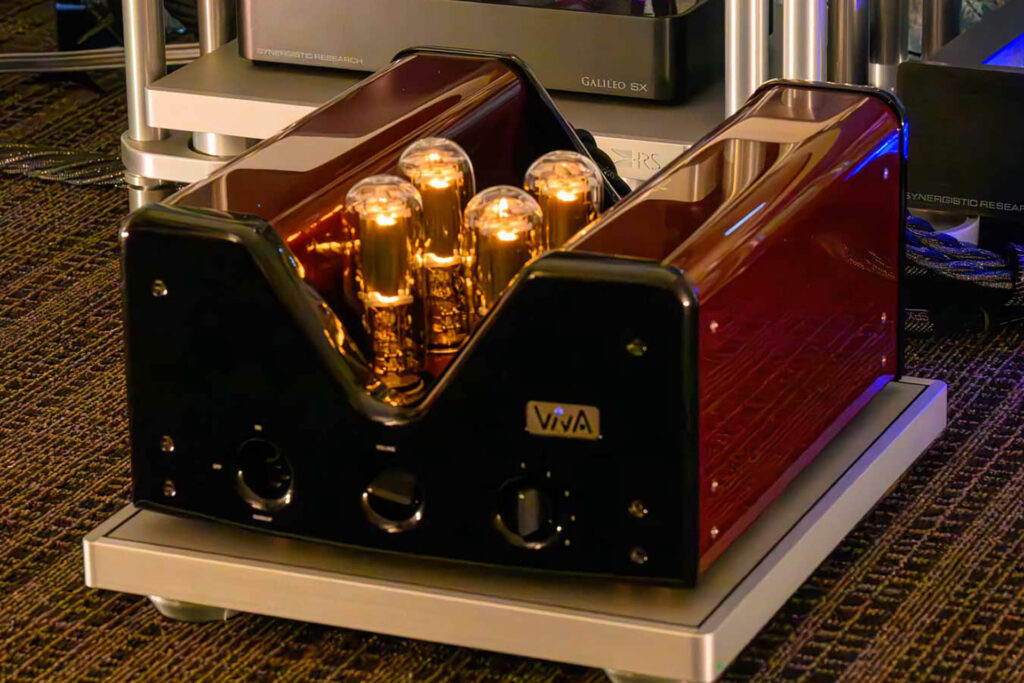
What Are Some Modern Downsides of Using Tubes in an Audiophile System?
- Lots of heat is the most obvious place to start when talking about the downside of tubes. The high level of heat required for the thermionic release of electrons means the tubes will get very physically hot. When left on for long periods, such as long listening sessions, any tubed device may easily heat up the room, not to mention the component itself. This condition is compounded if there are multiple pieces of tubed gear – like an amp, preamp and phonostage.
- Generally speaking, tubed components use a lot of electricity. For those who are mindful of how much electricity a stereo system uses, tubed gear will almost always be more power consuming than solid state gear. This may lead to higher utility costs. Some tube amps have a bias feature, which allows the reduction of the power consumption and usually a lower operational level of heat. Bias may range from nearly zero percent of full power to 50 percent to 100 percent. Lower bias levels usually will also mean reduced sonics. Tube amps reportedly lose about 70 percent of the energy they draw from the wall to heat, thus they are anything but efficient in terms of cost and overall operation.
- It is not advisable to leave tubes powdered on all the time. Because of the high levels of heat most tubes create, their lifespan is typically shortened when powered on for long periods of time. Essentially, the more they are in a power on state, the faster they will burn out and need to be replaced. Some tubes do last longer than others, but they all have a finite service life. Small triode tubes may last for about 10,000 hours. Larger tetrode and pentode tubes may last substantially less. Once tubes begin to fail, their sonic capability will begin to gradually suffer. So, if your tubed amp or other component suddenly begins to sound less glorious than normal, it is a pretty safe bet one or more tubes is on the short road to failure.
- Tubes tend to be microphonic. This is a really wild condition whereby a tube will tend to act like a microphone and pick up external sounds. If a subwoofer or large floorstanding speakers are placed very close to a tube amp, the bass frequencies of the driver(s) may be picked up by the tube and transmitted as distortion. To test how much a device may be affected by this condition, set the volume at a minimal listening level, lightly tap on the component’s housing and listen for the tapping sound to come through the speakers. The louder the tapping sound is presented by the speaker, the more suspectable to microphonic effect your device will be. It is not advisable to tap on the tube itself.
- Tubes are not available in a surplus status at the present time. This may change as time goes on, but there are not many manufacturers of tubes in the United States. Russia was once a source, but their production is not anywhere nearly as robust as it once was. There are also tariffs over their attack on Ukraine, which make getting Russian tubes even more complicated these days. Other countries in Europe have been effective suppliers of tubes at one time or another. Think places like Poland and some of the other similar European countries. At the time this article was written, Ukraine was a major tube manufacturer and was a supply partner to audio companies all around the world. With the war with Russia, how long Ukraine will remain a significant player in tube production is unclear. In a perfect world, we wouldn’t have to deal with geopolitics in our audio systems, but we don’t live in anything close to a perfect world, thus these are our realities.
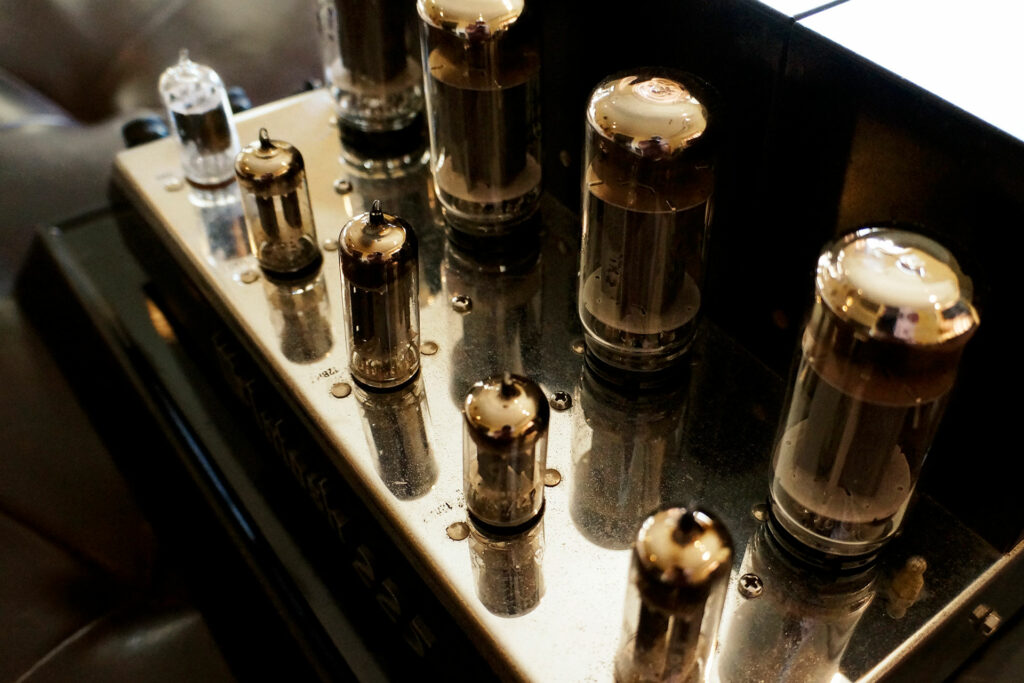
What Are Some Modern Day Differences Between Tube Based Audiophile Gear and Solid State?
Now we get to the heart of the matter for the modern audiophile. Tube-based audiophile electronics can produce very realistic levels of clarity and accuracy. What most people call a “warm” sound is how an analog tubed device sounds more “natural” than a solid state circuit. With the advent of modern, Class-D semiconductor-based amps which create little to no heat, need almost no maintenance and draw minimal power from the wall, many audiophiles feel Class-D sonically rivals tubed gear without any of the downsides.
Tubed gear uses distortion as a friend to achieve this characteristically “warm” sound. We’re talking harmonics here, specifically even ordered harmonics. Tube amps utilize second order distortion, which to most human brains sounds pleasing. And certainly, contrary to accepted audio norms, tubes are not as prone to clipping (overloading the amp) and consequently make better use of distortion than do solid state components. It is not uncommon for a SET amp, for instance, to have very high levels of distortion, yet still sound magnificent. It is not advisable, therefore, to make choices based exclusively on distortion specs when considering an SET amp.
Some designs are called “hybrid.” These devices use both an analog tube design, normally on the output stage, and a solid state circuit, normally on the input stage. This design intends to provide a best of all worlds. I once had a hybrid phonostage. The solid state input was powdered on all the time. When the power button was activated, the tube outputs would power on and the phonostage was ready for use. However, it did take an hour or more for both stages to reach thermal stability and produce the highest level of sonics. Normally, I would turn the phonostage on, leave the audio room and return in an hour or so, when everything was warmed up and ready to go. My current phonostage is completely solid state and remains in a constant power on state. Warm up is therefore not necessary. I will allow, however, tubes and LPs do seem to go together like cake and ice cream.
Tubes also have an advantage in personalizing a pleasing sound. “Tube Rolling” is the practice of using a variety of different tubes by different manufacturers and even different designs, as long as they are the same type of tube overall. Trying a variety of tubes allows the user to find the most pleasing sound. It is very difficult to start swapping out transistors in a solid state amp.
Another common concept in the audiophile tube world is “New Old Stock.” While they are decidedly difficult to find, the idea is discovering tubes that historically yielded significant levels of performance, but were made many years, even decades ago. If a supply of such tubes is found in the back of an electronics store, they may be dusty and the boxes faded. However, the tube is otherwise brand new and never used. These tubes are therefore termed “new old stock.” Finding a stash of “NOS” tubes is a rarity and, if found, better buy them all.
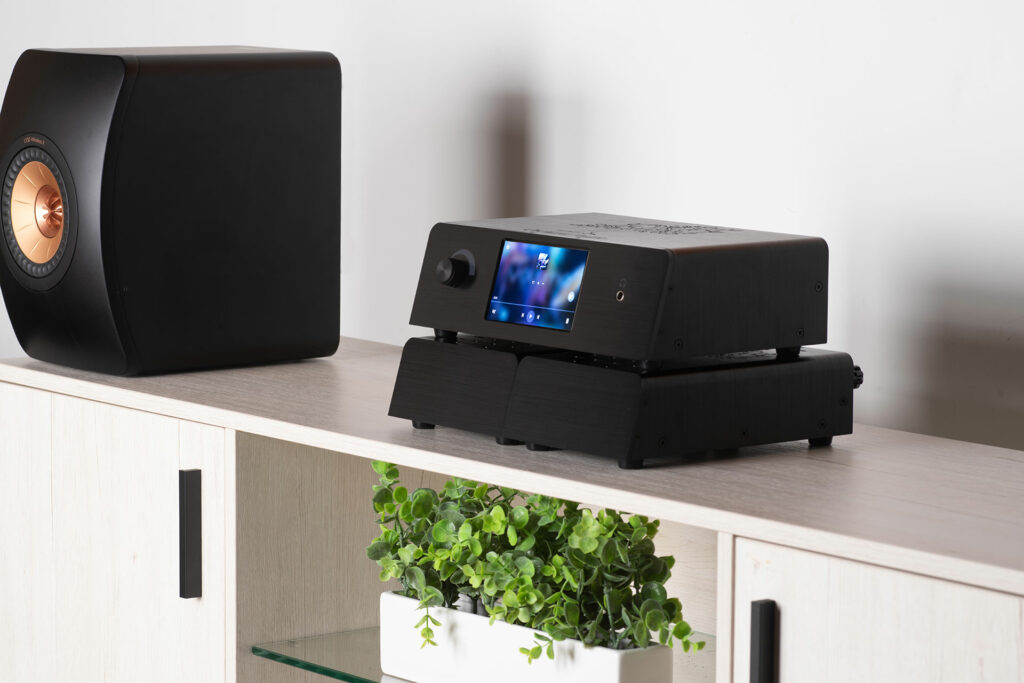
How Does Tube Gear Match Up to New Solid State Amp Designs?
If solid state devices have done anything innovative, they have embraced a wide ranging design ethos. We now have Class-D amps which, to many audiophiles, sound far superior to multi decades old designs. New technologies, such as Gallium Nitride (GaN) amps, are combining affordability, light weight and, for an increasing number of amps, remarkable sonics which many feel rivals Class A and tube designs. Solid state amplifiers are available with other components, such as preamps, phonostages, DACs, and streaming devices all built into one housing. For that matter, a variety of solid state gear may be bundled into an all in one component, just like your personal insurance needs. One relevant question – does the convenience of all the new and innovative solid state designs outweigh the sonics a significant percentage of audiophiles prefer in choosing tubed gear? Given the vastness of all audio equipment choices, this is a pervasively difficult question to answer.
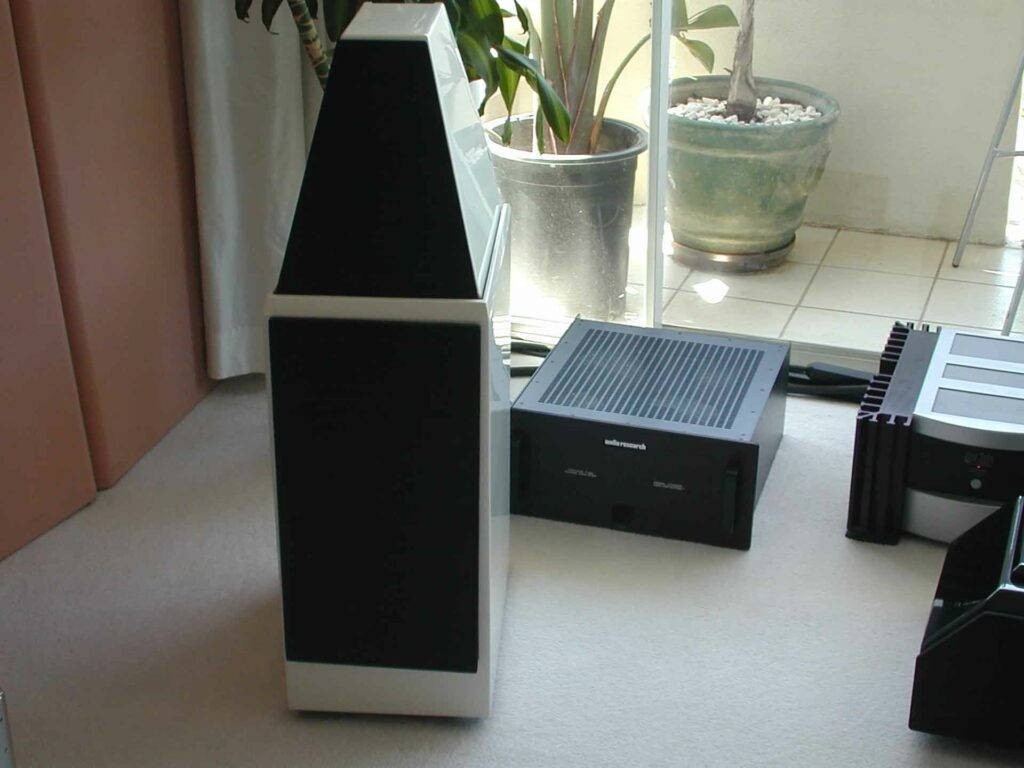
Final Thoughts on Tubed Audio Equipment These Days …
Many solid state proponents today have the concerted opinion that solid-state audio gear has progressed to the point where it is sonically equal to analog tubed gear. The design of solid state equipment, the theory goes, has been constantly changing, and actually improving, while the basic functionality of tubed gear has remained essentially the same. Both of these positions have some level of associated truth. At the end of the listening session, so to speak, this entire debate boils down to one principal deciding factor – personal preference. Some people prefer the warmer, purportedly more natural sound of tubed equipment. Others, like myself, are firmly entrenched in the solid state camp. Still others like to mix and match.
For tube aficionados, it will be a very difficult task to diminish the level of devotion to these types of enthusiast audiophile components. They will forever rejoice in the sound of their tubed amp, preamp,phonostage and any other related devices. They are not interested in what those who champion solid state believe, or the equipment they support and purchase. Considering tubes are at least a 100 year old technology, this level of devotion certainly speaks to the attractiveness of such a timeless component design. Deciding on whether a tubed piece of audio gear is the correct choice is only provable by one predominant task – listening. This may not be a welcome practice, but one that is necessary. How will any audiophile be able to decide if they enjoy a tubed component if they do not hear it for themselves? Answer – they can’t.
Just as someone may like chocolate ice cream, others like vanilla, some like Ford and others love themselves a nice Chevy. Personal preferences are our guiding principle in whether we like the sound of one audio technology over another. Tube amps are old-school but, just like a powerful muscle car from the early 1970s, there is an appeal to the time-tested, musically engaging technology of tubes, despite all their real-world downsides. Are today’s electronics better? Just in the past few years, the delta in performance from tubes to Class-D switching amps, as well as Class-A amps, has narrowed dramatically. For most people, these new technologies are going to be more compelling, but let’s not forget about the allure of tubes. They produce a sonic magic which not only will warm your listening room, but they can also warm your heart with a level of sonics many feel is unequaled.




Please elaborate on the Ukrainian vacuum tube factory that was knocked offline by the recent Russian invasion as I am completely unaware of what you are talking about.
Of course tubes are relevant!
I mean, how else will communication happen in the event of a nuclear holocaust?
My apologies for poor taste and an attempt at (dark) humor.
That said, after listening to a Lampizator DAC ($$$) a couple of days ago, I can only hope tubes will remain available for the duration.
Change is hard for many older audiophiles.
The way things have been takes on a higher value than it should in our hobby thus keeping new technologies on the back burner.
I used to develop and manufacture linear powered quasi-comp amplifiers similar to Constellation, Pass Labs, and Bascom King’s final product that is sold by PS Audio–all of which have roots connected to the Harman Kardon Citation 12 (and the 1967 RCA Transistor Manual).
When a friend asked me to build him a class D amplifier with some “OEM-only” circuits developed by Bruno Putzeys, I told him he wouldn’t like it.
When he said, “humor me” and fulfilled his request, I realized my own limitations and have since adopted class D as my reference.
When I can no longer continue to learn, or remain open to learning–then my time for transition has arrived (which is not meant to suggest I’m without an expiration date if I remain a lifelong learner).
I’ve had the good fortune to have good teachers and to learn how to live a reasonably healthy life.
Tomorrow marks the day I begin to learn more about medicare, yet, still, on a good day (with clean ears and clear eustachian tubes) I’m able to hear to 20kHz.
As for things taking on a higher value than they should in our hobby. . . ?
When there is greater value placed upon what a product looks than what it sounds like, then money spent on cosmetics will often cost more than what is spent on the entirety of the product intended for the primary sense–our hearing.
I understand you love Class D and it’s the greatest thing since sliced bread for you. In turn understand because you like it don’t mean everyone will or should. I put a real effort to find a light weight amp when I was looking to purchase I really didn’t look forward to ever having to deal with a 100 pound amp ever again. Based on the Class D buzz I listened to some good units. I didn’t find one in my area or search at the time that would satisfy me. My system has to be something I can sit in front of and listen for a long time. I was not comfortable with Class D sound. So here I am with a solid state amp weighing in at 107 lbs.
Maybe try to be a bit more objective regarding Class D. I could be wrong but you seem to have some aggression because all of us aren’t where you are with Class D.
When you say you were “not comfortable with Class D sound,” please permit me to paraphrase your statement with the added qualifier: you were not comfortable with the Class D sound based upon the limited number of examples you had the opportunity to audition.
My hunch is there are many linear powered amps with sound you would not be comfortable with, too, however would likely refrain from stating as a generalization that you’re not comfortable with Class A or B amplifiers.
To be fair, I was less than enamored by some of the early class D designs. It was not until I was introduced to product designed by Bruno Putzeys, who “cut his teeth” on developing class D while working at Philips, when I heard a class D amp that connected me to the music.
Of course, implementation matters.
While I considered Accuton’s first drivers, the C2-11 and C2-77 to be their most musical drivers–and most of what came after these to have a clinical and amusical character–I discovered with careful implementation that some of their newer drivers can produce very good (musical) results.
I have no interest in trying to sell or “psychologize” the sound of any product, and encourage people to trust their own senses over what others say–no matter the other’s “status” as a professional reviewer, degreed audiologist, golden ear expert, etc.
I hope you’ll stay open to “the possibilities” within the hobby, not only with respect different audio circuits, but to potential changes in what appeals to you and “how” you might listen.
Like all things learned, some of our lessons and preferences are externally conditioned, and some are unique to the person we are in the process of becoming.
I hope, too, you’ll continue to enjoy the ride. . .
On the other hand many older audiophiles are eager to explore any technology that has the potential to advance audio equipment. Some of us have even experienced first hand the evolution of solid state audio from the days of germanium transistors.
Enthusiasts buy tube amplifiers because they enjoy their sound. Some points: JFET devices when used in critical locations, may impart tube like characteristics to a solid-state amplifier. Similarly with Class-D, the control loop may be designed to mimic tube characteristics. My solid-stereo amplifiers have always been powered 24/7 to reduce thermal & inrush-current stresses, I couldn’t do that with a tube amplifier? Most solid-state amplifiers are direct coupled resulting in low output resistance such that speaker impedance variation has a negligible effect on tonality. Most tube amplifiers are transformer coupled with high output resistance that requires a speaker with minimal impedance variation, that is often difficult to achieve. Global negative feedback may be used to reduce amplifier output resistance but with tube amplifiers it’s popular to tout low negative feedback as a benefit?
Audio Research, VTL, BAT, Manley, AirTight, Rogue Audio, PrimaLuna, and yes, even McIntosh all are perfect reminders of why vacuum tube electronics are viable and preferable to solid-state technology. As a almost-totally satisfied solid-state owner NOW, I still lust after the ultra-expensive valve gear. But alas, I need to sell audio to make the money to afford it… lol. Solid-state gear from Holo Audio to Benchmark prove tubes aren’t the only great ones, though. Technology has come a long way in producing more linear circuits everywhere. Even companies that were so-so in 80’s (Adcom, others) can produce much better gear than possible 40 years ago.
Dang, I just scrolled down a smidge and saw EveAnna just posted a question! She RAWKS. (I wanna hear that new phono amp of theirs.)
Oh dang it… I forgot to give kudos to Paul Wilson. GREAT article!
Thanks Jeff, I appreciate the compliment!
I thought the article had some good info and remained fairly objective.
I know you all are big proponents of Class D. My theory is we all listen for different aspects of music or the audio presentation. I feel I am more sensitive to some audio cues then most from my experience. I’ve sent components back others are perfectly happy with. I have heard some Class D amps but obviously not all, I have yet to hear one that didn’t have what I can only describe as an artificial type presentation. The amps had good sound it was just something in the presentation that kept me from purchasing. Your comparison of tubes and Class D prompted me to share my opinion. I personally don’t hear the similarity. I think as well “tube like” can mean different things to different people.
I realize the article is about tubes. In myopinion the sound of tube and solid state is not as different as in the past. Meaning “tube like” used to mean a certain stereotype. Today you can buy tube gear that has transients and transparency that rivals good solid state. In turn you can buy solid state that is designed to have the warm and some other aspects of a classic tube sound. In the end it’s which one your ears enjoy.
Thanks for allowing my comments and writing on some good topics.
Hey Bryan, thanks for leaving such a well reasoned comment. I agree that Class D has its advantages and disadvantages. And there is no doubt the new GaN Class D amps are gaining popularity as they become more widespread. My real goal in this article was to do a little deeper dive into tubes for those who may not be familiar with how they work. As to the comparisons of tubes vs solid state or Class D, regardless of the technology, that is more a matter of personal preference. For what it’s worth, my preference is Class AB solid state.
Tubes are as relevant as Vinyl.
Ouch. 🙂
Ah(!), but let’s note the unconscious use of the upper case “V” on Vinyl.
When music reaches us beyond the conscious mind, then connection and catharsis awaits. . .
Paul, great article (as always) and a topic I am reminded of each time my room warms up from my tube amps. Having owned both solid state and tube gear, it’s proven less about which platform is better and more about system integrity and most notably matching the amp to the speakers. My prior ESLs sounded lively with a solid state amp and dull with a tube amp and my current efficient and relatively easy-load speakers sing with my 50 Watt SET amps. I will say the recent improvements in solid state amp technology, smaller platforms, amazing sound, and ease of use factors are compelling. Just might get the tube manufacturers to up their game. As the consumer, we win.
Excellent article, Thank-you on a job well done. Congrats to all.
Thank you for your kind words Jeff!!!
I just want to know if your vacuum tubes wear wigs and heels when they are powdered up.